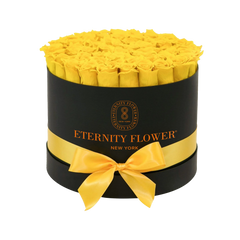Fluffy flowers, with their soft and delicate appearance, add a unique texture and visual interest to any garden. These blooms, characterized by their plush, feathery petals, can transform your outdoor space into a haven of softness and serenity.
Whether you're an experienced gardener or just starting out, incorporating fluffy flowers into your landscape is a simple yet effective way to enhance its beauty. This article explores various fluffy flower varieties and offers tips on how to integrate them into your garden for maximum impact.
Read more: Growing Gorgeous Summer Flowers: Expert Tips for Your Garden
Choosing the Right Fluffy Flowers

When it comes to adding a touch of softness to your garden, fluffy flowers are the perfect candidates. These blooms, known for their plush, feathery textures, can transform any garden into a whimsical paradise. Here are some examples of fluffy flowers that you can consider for your garden:
- Astilbe: Known for its feathery plumes, Astilbe adds a soft, airy touch to any garden. It thrives in shady spots and comes in a variety of colors, including pink, red, white, and lavender.
- Chrysanthemums: With their full, rounded blooms, chrysanthemums are a classic choice for a fluffy flower display. They come in a wide range of colors and sizes, making them versatile for different garden styles.
- Pampas Grass: For a dramatic, fluffy statement, pampas grass is a great choice. Its tall, feathery plumes stand out in any landscape and are especially striking in the autumn.
- Pussy Willows: These are known for their soft, fuzzy catkins that appear in early spring. They add a delicate texture and are a sign that warmer weather is on its way.
- Cockscomb (Celosia cristata): This annual plant is known for its striking, brain-like flowers that are incredibly soft to the touch. They come in vibrant colors like red, yellow, and purple.
Creating Textural Contrast
Gardening with fluffy flowers offers a unique chance to play with textural contrasts in your garden. By pairing these soft, feathery blooms with plants that feature glossy, rigid, or spiky foliage, you can create a visually stimulating and diverse landscape. This contrast not only enhances the beauty of your garden but also adds an intriguing variety of textures that captivate the eye.
Fluffy Flowers for Every Season
Caring for Your Fluffy Blooms

Caring for fluffy flowers involves understanding their specific needs to ensure they grow healthy and vibrant. Here are some key care tips for maintaining your fluffy blooms:
-
Well-Draining Soil: Most fluffy flowers require well-draining soil to prevent root rot. Ensure your garden bed or containers allow excess water to escape, keeping the roots healthy.
-
Adequate Sunlight: While the sunlight needs may vary, many fluffy flowers prefer a sunny spot in the garden. Some, like astilbe, may thrive in partial shade, so it's important to research the specific light requirements of each variety.
-
Regular Watering: Consistent watering is crucial, especially during dry spells. The soil should be kept moist but not waterlogged. Over-watering can be as harmful as under-watering.
-
Occasional Fertilizing: Feed your fluffy flowers with a balanced fertilizer during their growing season to promote healthy growth and vibrant blooms. Over-fertilizing can lead to lush foliage at the expense of flowers, so follow the recommended rates.
-
Pruning and Deadheading: Regularly prune and deadhead spent blooms to encourage new growth and a tidier appearance. This practice also helps in preventing disease and pest infestations.
-
Mulching: Apply a layer of mulch around the base of the plants to help retain moisture, regulate soil temperature, and reduce weed growth.
-
Pest and Disease Management: Keep an eye out for signs of pests or diseases. Early detection and treatment can prevent more serious problems.
-
Winter Care: For perennials, prepare them for winter by cutting back the foliage and adding extra mulch for protection, especially in colder climates.
Designing with Fluffy Flowers

Incorporate fluffy flowers into your garden design by using them as focal points, borders, or even in container gardens. Their unique texture makes them excellent choices for adding depth and interest to your garden layout.
Read more: Blooming Delight: Elevate Your Garden Tea Party Decoration with Flowers
Conclusion: A Garden of Soft Splendor
Incorporating fluffy flowers into your garden is a simple yet effective way to add a touch of softness and whimsy to your outdoor space. With their unique textures and diverse varieties, these flowers offer endless possibilities for creating a garden that's not only beautiful but also a sensory delight. Embrace the charm of fluffy flowers and watch as your garden transforms into a soft, inviting paradise.


























